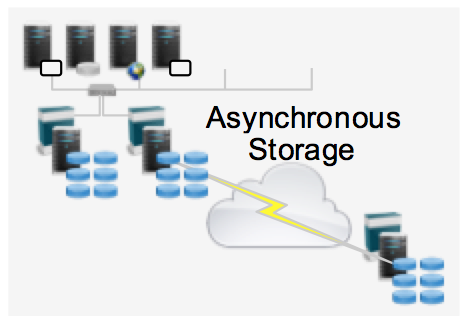 Co-Written with Usha Andra, Senior Analyst, SP Thought Leadership
Co-Written with Usha Andra, Senior Analyst, SP Thought Leadership
For many of us, precious memories are digitally preserved in the form of pictures and videos. How we store and access our favorite photos, clips, songs and other digital content has evolved from hard disks to USB drives and now on to the cloud. And for those of us who have unfortunately dealt with a hard disk crash on our work or personal computers, we are painfully aware of the importance of data backups. Secure data replication and fast retrieval are essential for business productivity and positive consumer experiences.

New challenges (and opportunities) are on the horizon for data transmission, replication and backup based on the global growth and adoption of IoE applications. As the IoE phenomenon connects things that were previously unconnected, it also leads to previously unseen demands on datacenter resources, which are at the core of the ever-expanding IoE universe. With more than 10.5 billion machine-to-machine (M2M) connections projected by 2019 (source: Cisco VNI Complete Forecast 2015), there will be an exponential increase in the amount of information that must be securely processed, analyzed, and acted upon.
This brings us to the complex heart of the matter — the proximity of the cloud datacenter to the end user. Successful computing requires both access(or reach) as well as quality performance. While a cloud service provider may have a large global footprint, cloud storage services may not be physically located close to the businesses, consumers or IoE equipment, which heightens the importance of latency (i.e., indicate any kind of delay that happens in data communication over a network).
Latency is highlighted in the Cisco Global Cloud Index with a focus on two key replication technologies: synchronous and asynchronous replication. Synchronous writing typically achieves zero data loss because there is almost immediate replication. (See Figure 1)
Figure 1: Synchronous replication

Source: Cisco Global Cloud Index
In asynchronous replication, writing occurs within a few minutes to perhaps several hours depending on the time that has been programmed within the replication system.(See Figure 2) Data degradation, delay and loss may occur.
Figure 2: Asynchronous Replication

Source: Cisco Global Cloud Index
Due to the delay caused in asynchronous writing on the secondary server, there is a direct impact on critical application failover. Disaster recovery systems use synchronous replication whereas personal content locker storage applications use asynchronous replication. Synchronous replication has a very stringent latency requirement of 5 milliseconds. No consumer grade broadband connection can support that level of computing today. In comparison, asynchronous storage has a latency requirement of 100 milliseconds which many broadband households and businesses can support today. (See Figure 3)
Figure 3: Latency requirement of synchronous vs. asynchronous storage

Source: Cisco Global Cloud Index
According to Gartner, due to the nature of IoE, organizations will be forced to aggregate data in multiple distributed mini data centers. Relevant data will then be forwarded to a central site for additional processing. Additionally, for near-real-time control applications, results will be returned to the sources to ensure proper operations of the distributed system.
IDC predicts that over the next couple of years, modular datacenter providers will increasingly provide customers with reference architectures and designs that customers can then tailor to suit their specific requirements. This suggested model helps providers maintain a standardized baseline for datacenter designs while facilitating customization for clients. Bringing the datacenter closer to the customer can provide a networking solution that is beneficial to businesses and consumers as well as the service providers that support them.
We want to hear from you! Please feel free to comment, share and connect with us on Facebook and @CiscoSP360.

CONNECT WITH US